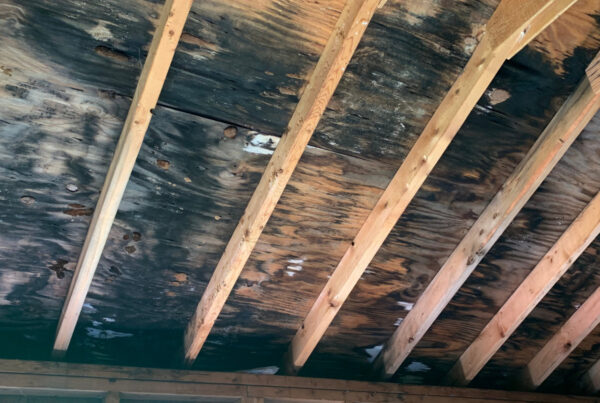How much will your real estate investment cost to maintain five years from now? Ten years from now? Fifteen or twenty years from now? Whether you own a commercial building or a two bedroom condominium, at some point the roof needs replaced, the façade will need tuck pointing or the air conditioner will reach the end of its useful life. What then? Do you refinance? Do you sell? If you have an adequately funded reserve account you have no worries. Reserve Studies are the financial planning tools used by owners to determine the adequacy of their capital reserve funds and to answer the critical question, “Do I have enough saved to pay for the roof and the heating system in five years when they need replaced
A professional reserve study will determine a reasonable funding plan based upon three key factors: 1. The expected remaining useful life of the building system or component
2. The present and future replacement cost of the element or component
3. Any expected returns on reserve funds
Maintaining property values is the primary responsibility of common interest real estate associations (CIRA’s) more frequently referred to as Homeowners Associations, Cooperatives, planned unit developments (PUD’s), and condominium associations. All CIRA’s have one common goal: to share responsibility for maintenance and upkeep of the common elements of the property. By systematically planning for obsolescence of critical elements of the building’s envelope, parking areas, mechanical, electrical and plumbing systems, associations can equitably assess owners throughout the lifetime of the building for their fair share of the use of the these assets.
Engineers and building inspectors observe the deleterious effects of Mother Nature every day. Who is better then at estimating the remaining life of building system and components than those who inspect them everyday? Who is more prepared to quantify these building systems and independently determine a reasonable replacement schedule and funding plan? Avoiding the responsibility for themselves and deferring it to other professionals, many association boards choose to contract with an outside consulting firm to perform an unbiased assessment of the physical condition of the common areas in a reserve study.
A reserve study can also provide an association with a long term financial analysis that will help them avoid the CIRA’s most dreaded pitfall – special assessments. Studying and evaluating for repair and replacement of the major building systems and components 10 to 20 years ahead allows CIRA’s to plan for and fund roof and parking lot replacements that often cost hundreds of thousands of dollars. Any funds not available in reserves must come from special assessments or a loan. Many owners, especially those on a low or fixed income, cannot tolerate these types of special assessments and face moving, borrowing, or foreclosure.
There may be a legal requirement for you or your homeowners association to maintain a capital reserve fund. In some states, there are laws which stipulate the need to maintain a fund whose sole purpose is to pay for long term repairs and replacements of major systems and components in the building. These funds are commonly referred to as reserve funds. Their adequacy is key to maintaining the critical systems and function of the property for the owners and investors. The solvency of these funds determines the ability of the owners to make improvements to the physical plant when needed without the need to borrow or special assess. Most importantly, these funds maintain the property value by keeping critical building envelop systems in good operating condition and the property on par with newer developments and buildings.
Many building owners outside the realm of CIRA’s find value in reserve studies helpful because they are useful budgeting tools. Routinely these studies are performed for religious facilities, schools, and other institutions. The condition reports included as part of the reserve study gives owners detailed information on the current condition of the major systems, allowing them to address minor problems before they become major issues. Reserve study inspections often provide owners with insights and recommendations for energy savings or preventative maintenance the value of which exceeds the cost of the study itself.
Finally and probably most importantly, having a reserve study ensures that the current and future owners share equally in the costs of making repairs. Owners in new complexes often complain that they will not be living in building 10 years when a new roof is needed. A reserve study will determine the current cost for their use of the roof. The owners must understand that they are paying for the use of the common elements during their tenure and that having strong reserve funds enables them to ask more competitive prices for their units at selling time.
There are many methods for performing reserve studies. One of the most common methods is a cash flow method known as baseline funding. By definition, the baseline funding method maintains a reserve fund balance above zero for each year of the study. This methodology utilizes four key steps: field inspection and quantification; schedule and cost projection; reserve assessment analysis; and report preparation and presentation. The field inspection involves the physical labor of climbing on the building to assess their current condition and to measure and quantify the common elements. Cost estimating is performed based upon the materials currently in use on the property. Most consultants use nationally recognized sources of cost data such as R.S. Means or Marshall Swift Construction Cost. Assessment analyses can be performed once estimated costs for the 20 to 30 year time period of the study have been compiled. Iterative procedures are used to find funding plans that satisfy the necessary expense assumptions and levelize the assessments over the period of the study. Assumptions regarding the rates of return on investment and inflation are inputs into the analysis. Different funding scenarios based on altering the assumptions can be evaluated simply and efficiently using tabular and graphical presentation formats.
Reserve Studies are financial models that help building owners prepare for the inevitable: the aging and deterioration of a properties infrastructure. These studies give the owners guidance in how to prepare financially for the major repairs and replacements with a straight forward and pragmatic approach.
Click on the link below to download the publication.


